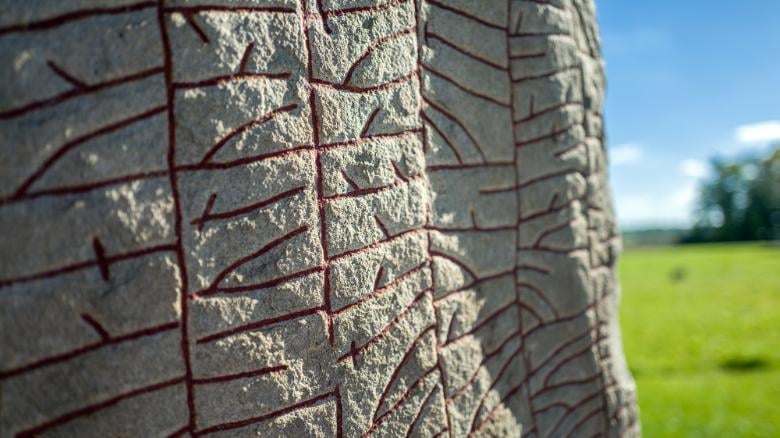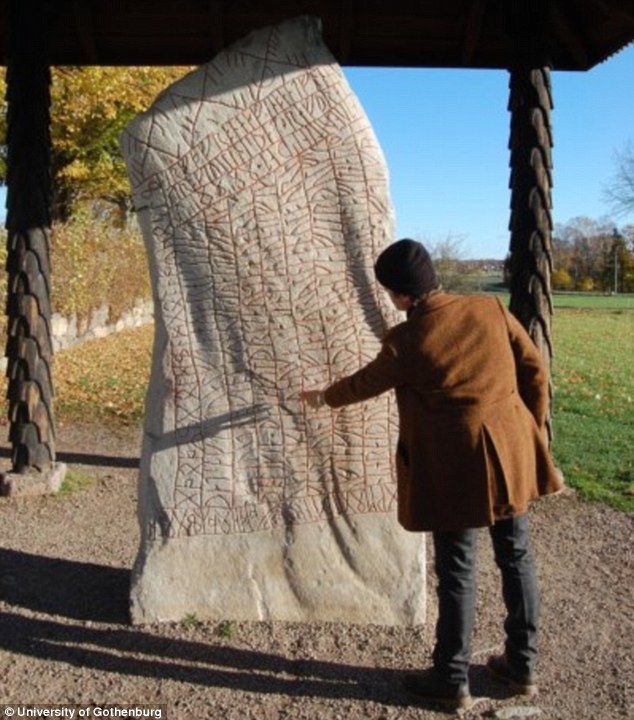Art World
The Riddles on a Mysterious Viking Monument Long Proved Baffling. Now Scholars Say They May Be Dire Warnings of Climate Change
The scholars credit the discovery to their interdisciplinary approach.

The scholars credit the discovery to their interdisciplinary approach.

Katie White

The meaning of enigmatic inscriptions on a 9th-century Viking runestone in Rök, Sweden, have long baffled scholars. But a new study suggests—eerily—that the five-ton granite slab’s riddles actually reflect anxieties and predictions about a catastrophic cold-weather climate crisis.
The Rök runestone is the longest extant known runic inscription, consisting of 28 lines of text and 700 runes (ancient Germanic characters). Given the monument’s age, the texts are remarkably legible and intact, with just one damaged line. The eight-foot slab, erected in a prosperous agricultural society in south central Sweden, delves into Norse mythology and lore. For years, scholars have been divided over the text’s narrative or ritual intentions; it was previously believed to have alluded to the emperor Theodoric the Great.

The runestone is now located beside a church church in Rök near Lake Vättern in, Östergötland, Sweden. Courtesy of the University of Gothenburg.
The new study, assembled by scholars Per Holmberg, Bo Gräslund, Olof Sundqvist, and Henrik Williams, posits an alternative reading. The researchers suggest the inscriptions reflect fears over the possibilities of a cold weather pattern similar to one the region experienced from 536 to 550, which was set off by a series of volcanic eruptions. Marked by lower-than-average temperatures during the dismal era, the region experienced widespread crop failures, starvation, and mass extinction that decreased the population of the Scandinavian Peninsula by more than half. The intergenerational knowledge of this period would have been passed down through oral and folkloric tradition.
The scholars credit the new findings to their integrative approach, which incorporated philology, archaeology, and the history of religion, allowing them to share new context for the period of time.
“Without these collaborations between textual analysis, archaeology, history of religions and runology, it would have been impossible to solve the riddles of the Rök runestone,” Per Holmberg, a professor at the University of Gothenburg, said in a statement.
The new study suggests that the text consists of nine questions: five centering on the sun and four contemplating the god Odin. The evocative lyrics, in this interpretation, touch on battles between light and dark, cold and warmth, life and death, and share structural parallels to early Scandinavian poetry, particularly the Eddic poem Vafþrúðnismál.
What exactly inspired such doom-and-gloom soothsaying? Scholars say the region experienced an onslaught of ominous celestial and environmental portents. “A powerful solar storm colored the sky in dramatic shades of red, crop yields suffered from an extremely cold summer, and later a solar eclipse occurred just after sunrise,” said Graslund, an archaeology professor at Uppsala University. “Even one of these events would have been enough to raise fears of another ‘Fimbulwinter,'” the Nordic mythological term meaning “Great Winter.”